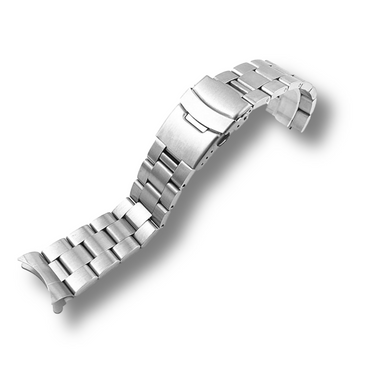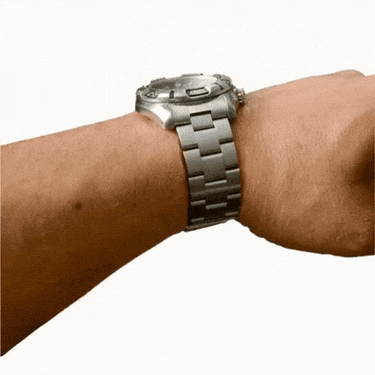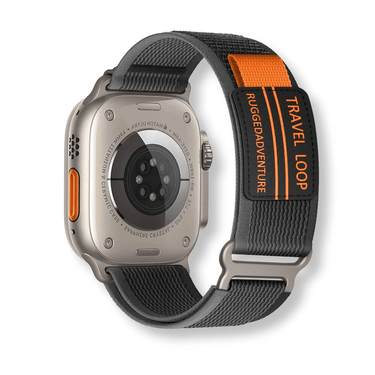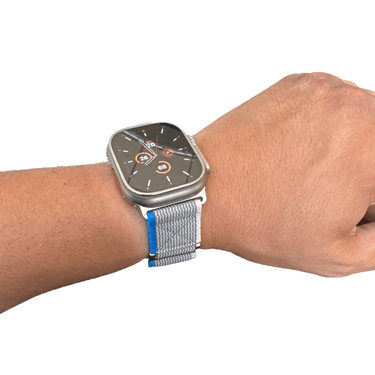If you are a watch collector, you know how important it is to keep your timepieces running smoothly. Proper maintenance is key, but sometimes it can be difficult to keep all of your watches properly wound. This is where a watch winder comes in handy.
The Explanation
A watch winder is a device that keeps automatic or self-winding watches wound when they are not being worn. It rotates the watch in order to simulate the movement of your wrist and keep the mainspring of the watch fully wound. This helps prevent damage to your timepiece from lack of use and keeps it ready to wear at any time.
The Importance
While some collectors prefer winding their watches manually every day, for those with larger collections, this isn't always feasible. A watch winder can be a lifesaver for those with multiple watches who want to ensure that each one stays in good working condition without constantly switching them out on their wrist.
Choosing the right watch winder is crucial for maintaining your collection's value and longevity. Using an improper winder can cause unnecessary wear and tear on your timepieces or even damage them beyond repair.
What We Will Cover:
- The different types of watch winders available and which type best suits your collection's needs
- Factors to consider when choosing a winder including movement type, directional requirements, capacity needs, power source options, aesthetics and design
- Different price ranges available for various features and what you should expect from each level
- Maintenance tips to ensure that your watch winder lasts as long as possible while keeping your collection in top shape
So buckle up and get ready to learn everything you need to know about choosing the right watch winder for your collection. Your beautiful timepieces will thank you.
Understanding Your Collection
Types of watches in your collection and their winding requirements
Let's get one thing straight - not all watches are created equal. You may have a varied collection of watches with different movements, power reserves, and winding needs. Some may require a specific number of rotations per day, while others may require a different direction for optimal winding.
It is crucial to understand the winding requirements of each watch in your collection before selecting a watch winder. For instance, if you own an automatic watch with a complex perpetual calendar complication, it requires precise and regular winding to function correctly.
On the other hand, if you have a manual-wind watch in your collection that doesn't require much attention or maintenance as long as you give it proper attention regularly. It's essential to note that not all watch winders can accommodate diverse types of watches.
Some are geared towards specific models or brands and may not provide sufficient rotation or direction options for every type of watch out there. Therefore, getting to know your collection personally will help you make an informed choice when picking the best watch winder.
The importance of knowing your watches' winding needs before choosing a watch winder
I can't stress this enough - knowing the intricacies of your collection is vital when selecting a suitable watch winder. Choosing the wrong type could lead to adverse effects such as over-winding or damaging delicate mechanisms within the timepiece.
Some automatic watches need precise rotations per day between 600-900 turns per day while others need double that amount; trying to force one model into another's setting could damage the movement severely. However, don't just rely on online reviews about what people say about what works best for their particular brand; sometimes even within brands itself one model may be better off being wound differently than another- this is where understanding your collection comes into play: you know what works best for your unique collection.
Before purchasing a watch winder for your collection, it's essential to learn about the winding requirements of each watch you have. This way, you can confidently choose a device that will deliver optimal performance while providing the necessary care and maintenance to your precious timepieces.
Factors to Consider When Choosing a Watch Winder
Type of Movement
One of the most important things to consider when choosing a watch winder is the type of movement your watch has. There are two main types of movements: automatic and manual winding.
Automatic watches wind themselves as you wear them, while manual watches require you to wind them by hand. If you have both types of watches in your collection, then it's crucial to choose a watch winder that can accommodate both.
Automatic vs Manual
While some collectors prefer the traditional feel of manually winding their watches, an automatic watch winder is more convenient and practical for everyday use. In my opinion, investing in an automatic watch winder is worth it to keep your automatic watches running smoothly without having to constantly reset them.
Directional Requirements
It's also important to consider the directional requirements for your specific watches as some require clockwise or counterclockwise rotations while others require both directions. Some high-end luxury brands like Rolex have specific winding requirements so be sure to research what your specific watches need before purchasing a watch winder.
Number of Watches
Depending on how large your collection is and how often you wear each piece, you may need a single or multiple watch winder. I recommend investing in a multiple-watch option if you plan on expanding your collection in the future or if you have several pieces that require regular winding.
Single vs Multiple Watch Winders
In my opinion, single-watch winders are only suitable for those with small collections or for those who only wear one particular piece regularly. Investing in a multiple-watch option will save space and money in the long run if you plan on expanding your collection.
Size and Capacity Considerations
Size and capacity should be taken into account when choosing a watch winder. Measure the dimensions of your watches and ensure that the winder can accommodate them comfortably.
In addition, consider where you will place the winder and if it will fit in with your decor style. In my opinion, it's worth investing in a high-quality, aesthetically pleasing option as it will become a functional piece of decor in your home.
Additional Features to Look For
Noise level: Peace and Quiet or Noisy Disruptions?
For some people, a watch winder's noise level isn't a big deal. But for others, it can be a dealbreaker. If you're someone who values peace and quiet or prefers to keep things discreet, then you need to consider the noise level of your watch winder.
Some winders are silent or nearly so, while others emit loud motor noises that might disrupt your home office or bedroom. In general, the more affordable options tend to have louder motors than their more expensive counterparts.
However, this isn't always the case.
Power source options: Battery vs. ACAnother feature worth considering is the power source of your watch winder. Typically, watch winders run on either batteries or electricity (AC). Some models are capable of running on both battery and AC power sources. Batteries are convenient because they don't require any wires or cords to operate. You can place your watch winder anywhere you want without worrying about finding an outlet nearby. However, battery-powered winders will need their batteries replaced periodically. On the other hand, AC-powered watch winders eliminate the need for battery replacements but require access to an electrical outlet at all times.
Aesthetics and design options: More than Meets the Eye
Aesthetics and design should be considered when choosing a watch winder. After all, you don't want something that doesn't fit in with the style of your home décor!
Watch winders come in various designs and finishes - from sleek modern styles with black finishes to traditional wooden boxes that complement classic interiors. If aesthetics are important for you , then take time exploring different designs before making a purchase decision - Don’t settle for less!
Price Range Considerations
Entry-level options for those on a budget
If you're just starting to build your watch collection, or simply don't have a lot of money to spend, an entry-level watch winder may be the best option for you. These winders are typically priced under $100 and are designed to hold a single watch.
While they may lack some of the features found in more expensive models, they still provide the basic function of keeping your watch wound when it's not being worn. One thing to keep in mind when shopping for an entry-level winder is that not all models are created equal.
Some cheap winders can be noisy or poorly made, which can cause damage to your watch over time. It's important to read reviews and do your research before making a purchase.
Another consideration is whether you want a battery-powered or AC-powered winder. Battery-powered options tend to be more affordable but require regular battery replacements, while AC-powered models offer more reliable performance but can be pricier.
Mid-range options with more features
For those who want a bit more functionality from their winder without breaking the bank, mid-range options are available for around $200-$500. These winders generally offer space for multiple watches and may include additional features such as programmable winding modes and built-in storage compartments.
While these mid-range winders may still lack some of the high-end luxury features found in more expensive models, they provide sufficient performance and quality at an affordable price point. It's important to consider what specific features you require before making a purchase - spending too much on unnecessary functions isn't financially wise.
High-end luxury options for collectors
If money is no object and you want only the best for your prized timepieces, high-end luxury watch winders can cost up to thousands of dollars. These winders are designed with exceptional craftsmanship and come in a variety of finishes, such as 24k gold plating or exotic woods.
In addition to their stunning aesthetics, high-end watch winders may offer features such as touch-screen controls, Bluetooth connectivity, and even built-in humidors for proper storage of your watches. However, it's important to note that these features may not necessarily improve the function or longevity of your watches - they're more for show than anything else.
Ultimately, the cost of a watch winder should be commensurate with its value and functionality. While high-end luxury options may look impressive, they're often overkill for the average collector.
On the other hand, an entry-level option that's poorly made can cause damage over time and end up costing you much more in repairs or replacements. It's important to weigh all factors when choosing a watch winder that suits your collection best.
Maintenance and Care Tips
How to clean and maintain your watch winder
Maintaining your watch winder is crucial to ensuring that it runs smoothly for years to come. Make sure you clean it regularly, at least once a month, using a soft cloth or brush.
Do not use any harsh cleaning agents as they can damage the winding mechanism. Also, make sure to remove your watches before cleaning.
Oil the moving parts of your watch winder every six months to keep them lubricated. Consult the manufacturer's instructions for oiling recommendations as different models may require different types of oil.
If you notice that your watch winder is not functioning properly even after cleaning and oiling, do not attempt to fix it yourself unless you are a certified professional. Seek out the manufacturer or an authorized repair center for assistance.
Common issues to look out for
One common issue with watch winders is overwinding. Overwinding can cause damage to the delicate mechanisms in automatic watches and render them useless.
To avoid this issue, make sure you choose a watch winder with correct winding settings based on your specific brand of automatic watches. Another issue is improper storage of the watch winder itself which can cause dust accumulation on its inner workings leading to malfunctioning or even stopping altogether.
Always store your watch winders in dry places away from direct sunlight and moisture in order to prevent rusting or any other damages caused by moisture build-up inside the device itself. Always be careful while handling ANY electronic devices such as Watch Winders as mishandling them could lead to more serious issues such as electric shock which could be fatal at times!
Taking care of your Watch Winder is important not only for its longevity but also for its efficient functioning in fulfilling its tasks: keeping our timepieces running accurately! So be cautious and take good care of your Watch Winder!
Conclusion
Recap of key points covered in the article
In this article, we have discussed the importance of choosing the right watch winder for your collection. We have emphasized the need to understand your collection, including the types of watches you have and their winding requirements. We have also covered a range of factors to consider when choosing a watch winder, including type of movement, directional requirements, number of watches, size and capacity considerations, additional features, and price range considerations.
We concluded by providing maintenance and care tips to ensure that your watch winder functions optimally for years to come. By following these guidelines, you can protect your investment and enjoy the convenience and elegance that comes with owning a top-quality watch winder.
Final thoughts on choosing the best watch winder for your collection
Choosing a watch winder requires careful consideration. The perfect one is not necessarily the most expensive or luxurious; it is one that suits your needs and accommodates your collection. While features such as noise level or power source options may seem trivial at first glance, they can make all the difference in making sure that you enjoy using your watch winder.
Ultimately, investing in a high-quality watch winder not only protects your timepieces but also enhances their overall value. It ensures that they remain accurate and reliable while keeping them safe from damages caused by stagnation.
So don't just settle for any ordinary case; choose a top-notch watch winder that speaks to you on an emotional level - one that matches both your style preferences and functional requirements. ,\ if you are passionate about luxury watches,\ then choosing a high-quality\ automatic\ watchwinder\ is essential to keep them functioning properly.\ A good quality automatic\watchwinder will help protect against wear and tear while keeping them wound-up at optimal levels.\ Furthermore,\ it will reflect your style and taste.\ Take the time to research and compare different brands,\ features\ and options to make the best purchase decision possible.\ Remember,\ this is an investment that will keep your collection in excellent condition for many years to come.

























